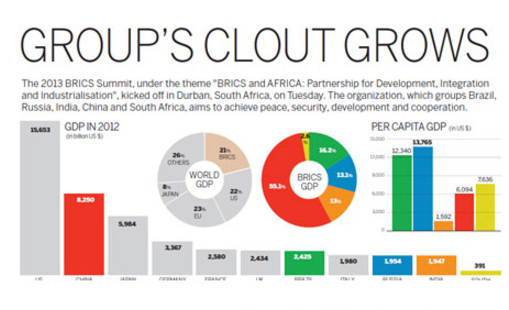Changing trade structure
Updated: 2013-01-28 13:34China's new leadership will introduce new round of economic reforms and promote policies to boost imports
China's foreign trade was sluggish last year. Although it increased to $3.866 trillion, up 6.2 percent from 2011, this was significantly lower than the 10 percent annual growth goal set by the government. Exports reached $2.05 trillion, up 7.9 percent, and imports totaled $1.82 trillion, an increase of 4.3 percent. The trade surplus was $231.1 billion, expanding 49.2 percent.
However, China's imports and exports increased 8.2 percent in December compared with a month earlier and its trade surplus rebounded to $31.6 billion, demonstrating there is great potential for China's exports and economy, as it actively changes its trade structure.
First, China's export destinations have become more diversified. For example, annual exports to emerging economies grew much faster than exports to the European Union and the United States. The EU remained China's largest trading partner and the US the second largest, and their combined trade volume accounted for more than 36.5 percent of China's overall foreign trade. However, there was significant growth in trade with emerging markets. For example, imports and exports to members of the Association of Southeast Asian Nations reached $400.3 billion, an increase of 10.4 percent.
Second, China's processing trade has declined modestly. In 2012, China's general imports and exports grew 4.4 percent year-on-year, accounting for 52 percent of the total value of foreign trade. Over the same period, processing trade imports and exports accounted for 34.8 percent of the total value of foreign trade, down 9.2 percentage points compared with 2011. This was mainly due to the sharp rise in production costs, which led to the processing trade transferring overseas. The decline in the processing trade has been conducive to the structural optimization of China's foreign trade, and to the enhancement of its international competitiveness.
Third, exports from China's middle and western regions increased significantly last year, with the growth in exports from mid-western China far higher than national average. Furthermore, in the process of the shift in industry to the interior, technology has been updated, economic efficiency has been increased, and the ecological environment has been protected.
Fourth, exports in fields where China traditionally has a comparative advantage, mechanical and electrical products and labor-intensive products, have grown at a higher rate than the overall growth in exports. In 2012, China's mechanical and electrical products grew 8.7 percent, 0.8 percentage points higher than the overall export growth rate over the same period. Its total exports of labor-intensive products grew 8.6 percent, 0.7 percentage points higher than the overall export growth rate over the same period. This shows that China's manufacturers have the potential to offset the rise in production costs and appreciation of the yuan.
Fifth, China's resources and energy imports have grown steadily. In implementing the new policy to increase imports and to promote the rebalancing of foreign trade, China's imports of energy and resources have continued to increase. However, due to the global economic downturn, the price of iron ore, copper, aluminum and other commodities have fallen markedly, which has clearly helped China expand its imports. In fact, even though the value of China's imports grew by 4.3 percent in 2012, the real increase in import volumes is larger because of the lower purchasing costs.
Finally, and more importantly, China's new leadership will promote a new round of economic reforms and these will further remove the fetters of the old economic mechanism. Meanwhile, over the next decade China will accelerate its urbanization, releasing further economic growth momentum. In the future, the construction of affordable housing and investment in railways and other infrastructure will lead to a further rebound in import demand, especially high-tech imports from developed countries. At the same time, Chinese foreign direct investment and exports are expected to increase as it implements its "go global" strategy.
Overall, China's growth in imports slowed in 2012, but as a result of government policies to rebalance its trade structure, its growth in exports is expected to be around 8.5 percent this year, and with the recovery of domestic demand and the promotion of policies to rebalance foreign trade, China's imports are expected to significantly expand to about 10 percent.
The author is professor and deputy director of China Center for International Economic Exchanges.







